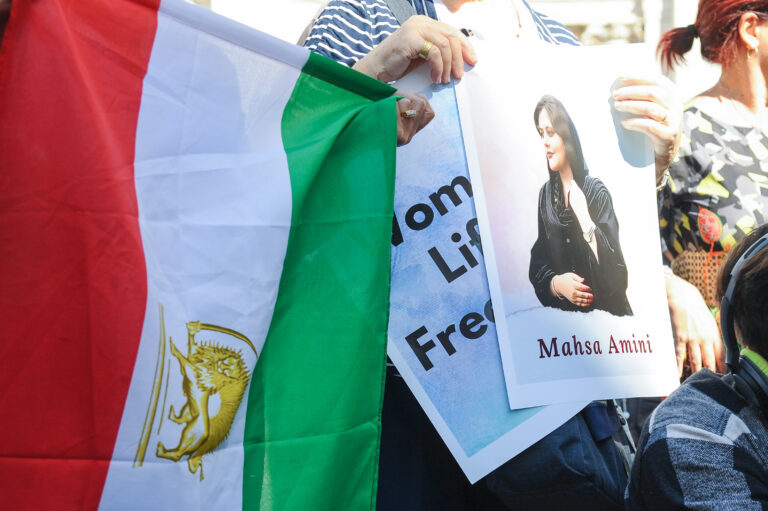What is happening in Iran can be summed up with two specific dates. The first is 15 August 2022, when President Ebrahim Raisi signed a decree with a list of new and updated restrictions on how women and girls must dress. This, increasing the rules regarding the hijab and chastity, thus undermining an increasingly stringent regulation that dates back as far as the Islamic Revolution of 1979.
The other date is 16 September 2022, marked by the death of Mahsa Amini under mysterious circumstances.
Table of Contents
Iran protests continues after 1,5 month since the death of Mahsa Amini: who was she
The 22-year-old Kurdish woman was in Tehran with her family when she was arrested by the local police. The charge was of inappropriately wearing her headscarf. However, she only came out of the police building in an ambulance. After two days in a coma, she died.
According to the police version, it would have been a sudden illness. But the family never believed this to be the truth. A sentiment that was also echoed by the Iranian community, which decided to rise up to demand truth and justice on the death of the young woman.
Suffice it to say that the first clashes between protesters and police were already recorded during the 22-year-old’s funeral.
Iran protests against the ayatollahs regime: women in the first line
This is not the first time the local community has risen up against the regime of the ayatollahs.
For example, in 2009 there were large popular uprisings against the re-election of President Mahmoud Ahmadinejad, attended by hundreds of thousands of people, which were suppressed by the government through the use of violence.
Also in the following years there were other para-revolutionary uprisings directed against the current ruling class. Which, however, always responded with repressions, ensuring that the regime itself continued to exist despite the numerous demonstrations.
However, this time Iran has won international media interest, not least because it is mainly women and students who are taking to the streets.
Amini’s tragic story, in fact, has lit a fundamental fuse in the country. Which, has now risen again against the Iranian theocratic regime of the ayatollahs.
In these protests, the role of women should not be underestimated. In fact, they are the driving force behind the protests that are taking place in Iran. For example, the act of cutting one’s hair as an action of solidarity for Iranian women originates from Iranian women themselves.
Who are the ayatollahs?
According to the definition, ayatollah is a title given to doctors of religious and legal sciences. They are high dignitaries of the Shia hierarchy, who constitute almost a theological aristocracy. From 1979 to the present day, the ayatollahs exercise a profound and strong political role within Iran.
At present, the current Supreme Guide of Iran is Alī Ḥoseynī Khāmeneī. He is an Iranian politician and cleric, the highest national representative of the Shia clergy, and former president of Iran from 1981 to 1989. According to The Post, the protests in recent weeks have been concentrated against this figure.
Read also: Could Russia really use nuclear weapons against Ukraine?
What is happening in Iran: what are the reasons for the demonstrations
As mentioned above, the main reason why the world is reporting on what is happening in Iran concerns the disappearance of Amini, whose story has yet to be definitively clarified.
However, we can consider this story as the straw that breaks the camel’s back. In fact, the country has not had a happy moment for several years. This is why we can say that the demonstrations and marches that are taking place in the Asian nation have very deep roots and involve various aspects of local society.
First of all, we have to take into account the history of the place, which is mostly made up of violent repressions against the demonstrators. At the end of the day, the regime has managed to stay in place also due to acts of force perpetrated against the population, which have only increased the anger in the inhabitants. And even now, the regime is responding violently to street demonstrations.
At the same time, Iran is not a country that is growing socially and economically. On the contrary, it is experiencing a rather serious crisis. Firstly, we have a percentage increase in inflation and unemployment. Secondly, corruption is widespread. In between, there is an ideological culture that poorly reconciles political personalities and community.












